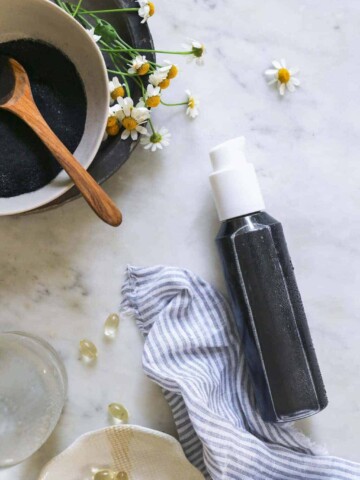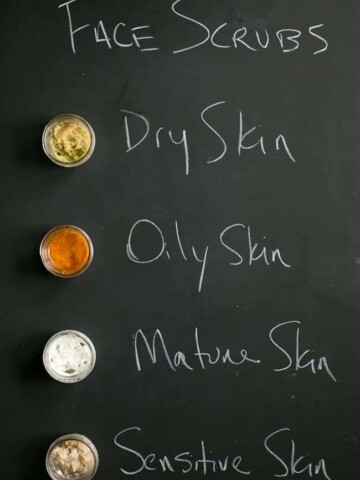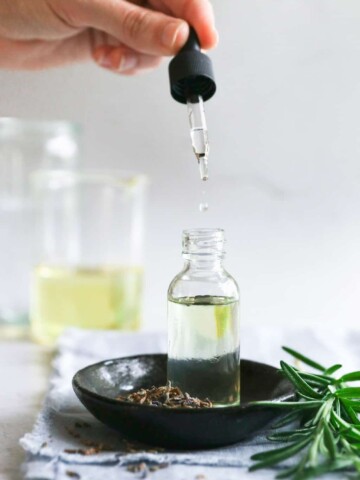Here's a little trick of the trade: You don’t have to visit your local spa to enjoy the benefits of a good facial steam. In fact, you can do your own mini face steam at home using just a few common kitchen items. Read on to learn how to re-create the spa experience at home!
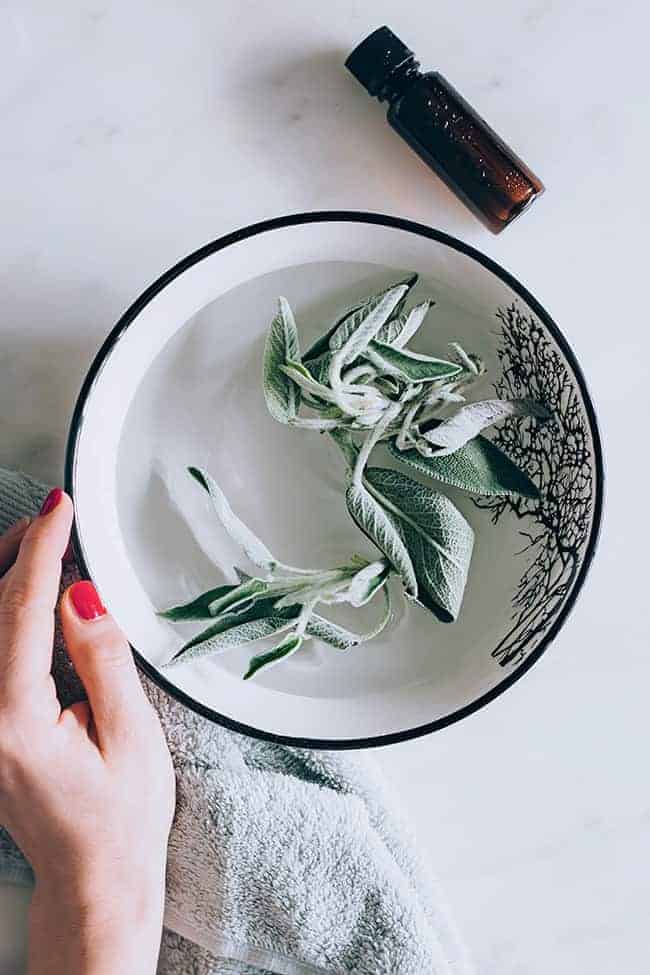
Jump to:
- How To Steam Your Face At Home
- Face Steam Benefits
- What To Add To Your Face Steam
- At Home Face Steam Ingredients for Every Skin Type
- 1. Tea Tree + Basil Steam for Oily or Acne-Prone Skin
- 2. Rosemary + Lemon Steam For Oily Skin
- 3. Geranium + Lavender Steam for Normal Skin
- 4. Chamomile + Tea Tree for Dry Skin
- 5. Black Tea + Eucalyptus for Puffy Skin
- 6. Green Tea + Lavender for Sensitive Skin
- 7. Rose + Chamomile Steam For Combination Skin
- 8. Green Tea + Frankincense Steam for Aging Skin
- How To Steam Your Face Without a Steamer
- When Not To Steam
- Other At-Home Facial Steps to Try
- FAQ
Meet the experts
- Melissa Urban, licensed esthetician and skin care expert at Skinforyou
- Elina Fedotova, celebrity esthetician and owner of Elina Organics Spas
- Medically reviewed by Dr. Jennifer Haley, a board-certified dermatologist
How To Steam Your Face At Home
Face Steam Benefits
Steam has long been recognized as an agent for enhancing blood circulation around the skin, softening it, opening up pores, and allowing better penetration of various skincare products, like serums and moisturizers.
Steam not only prepares the skin, but it is a crucial step during the facial. Here's a look at some of the key skincare benefits of using steam:
1. Increases circulation
The warm steam helps increase circulation, which, in turn, helps remove toxins, increases nutrient and oxygen delivery to our cells, explains Melissa Urban, licensed esthetician and skin care expert at Skinforyou.
2. Preps the skin for extractions
If you're looking to clear out some of your pores with extractions, steaming beforehand is a smart idea. This is because the warm air opens the pores, making it easier to release acne-causing bacteria trapped within, notes Urban, who recommends leaving extractions up to your esthetician.
3. Allows for better absorption of products
Of course, you want your skincare products to work to their max to yield the most optimal results. A great way to do this is to steam prior to applying them. This allows for better product penetration from the ingredients in your toner, serum and masks, notes Urban.
What To Add To Your Face Steam

To do a at-home face steam, you'll need:
- A pot of boiling water
- A heat-safe bowl (ceramic or glass)
- A towel that is large enough to cover your shoulders, head, and the bowl.
- Herbs and essential oils
Ways to Vary Your Facial Steam
These ingredients are a natural and soothing way to address various skin concerns while enjoying a bit of self-care. Enjoy experimenting with these ingredients based on your skin's needs:
1. Experiment with Different Herbs
Each herb offers unique benefits, so mixing and matching can enhance your steaming experience. For instance, mix lavender for relaxation, mint for its refreshing properties, and rosemary for its ability to enhance circulation and rejuvenation.
2. Add Citrus Peels
Adding citrus peels like orange, lemon, or grapefruit to your steam not only imparts a refreshing scent but also infuses the steam with vitamin C, which is great for brightening and revitalizing the skin.
3. Use Tea Infusions
Replace water with a strong brew of green tea, chamomile tea, or any herbal tea that suits your skin type. Teas are rich in antioxidants and can provide additional benefits, such as anti-inflammatory properties with chamomile or detoxifying effects with green tea.
4. Incorporate Floral Waters
Instead of plain water, use floral waters such as rose water or orange blossom water for their additional hydrating properties and soothing scents.
5. Utilize Spices
Spices like cinnamon (in small amounts) or turmeric can be added for their antimicrobial and anti-inflammatory properties. Just be cautious as some spices may irritate sensitive skin.
6. Essential Oils
Tailor the essential oils for your steam used according to what your skin needs at the moment. For relaxation, add lavender or chamomile. For a more invigorating steam, use eucalyptus or peppermint.
At Home Face Steam Ingredients for Every Skin Type
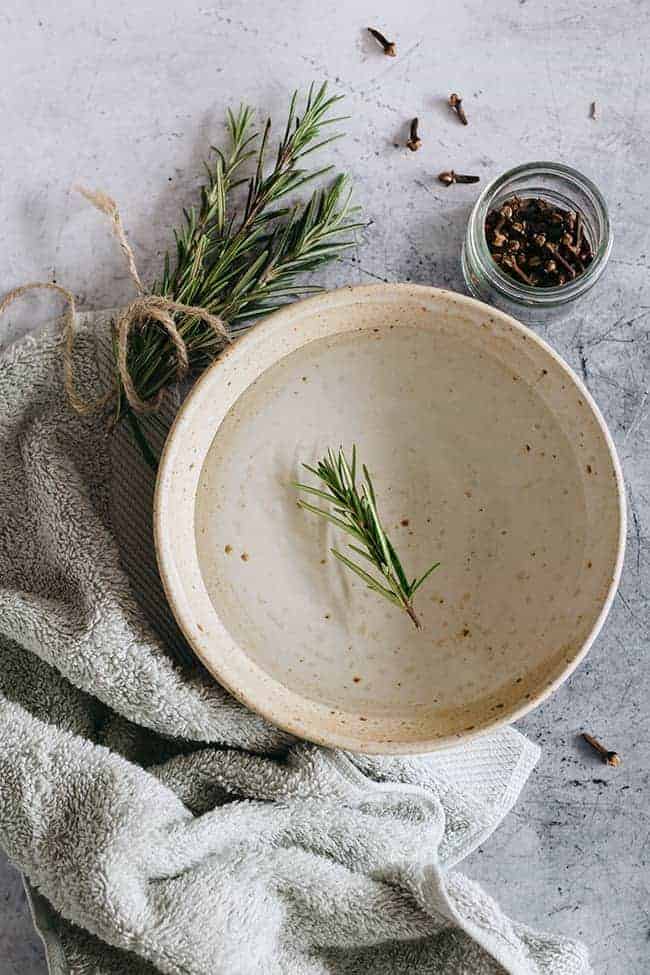
Kick your steam up a notch by choosing the essential oil or herb combination from below that fits your skin type:
1. Tea Tree + Basil Steam for Oily or Acne-Prone Skin
Facial steaming is great for all skin types, but especially those with mild-to-moderate acne and oily skin. Tea tree is well-known for treating acne, and basil is antibacterial and anti-inflammatory.
After bringing a pot of water to a boil, add:
- 3 drops tea tree essential oil
- A few fresh basil leaves
For acne-prone skin, following up with a clay mask is ideal. The steam will have softened any congestion, making it easier for the mask to help detox and clean out your pores.
2. Rosemary + Lemon Steam For Oily Skin
Rosemary helps control oil production and lemon is a natural astringent and cleanser.
- 1 tablespoon rosemary herbs (fresh or dried)
- 1 tablespoon peppermint leaves (fresh or dried)
- 2-3 lemon peel slices
Stir in the lemon, rosemary, and peppermint after removing the pot from heat. Follow the face steam with a face mask for oily skin.
3. Geranium + Lavender Steam for Normal Skin
After bringing a pot of water to a boil, add:
- 1 tablespoon lavender (fresh or dried)
- 3 drops geranium essential oil
A rosewater spray is a great way to follow up facial steaming. It will feel cooling on the skin, helping the pores to constrict again for flawless-looking skin.
4. Chamomile + Tea Tree for Dry Skin
Soothe irritated skin with a chamomile steam. The healing tea calms skin irritation and reduces redness. Pair it with tea tree to kill bacteria on the skin's surface.
After bringing a pot of water to a boil, add:
- 2 chamomile tea bags
- 2 drops tea tree essential oil
Follow your steam with a hydrating face mask to lock in moisture.
5. Black Tea + Eucalyptus for Puffy Skin
Try a black tea steam if you're battling congested, puffy skin. The caffeine boosts circulation to reduce swelling and activate lymphatic drainage. Add eucalyptus oil to help open up clogged airways.
After bringing a pot of water to a boil, add:
- 2 black tea bags (green tea works well, too)
- 2 drops eucalyptus essential oil
Follow your steam with a few minutes of face massage using a jade roller, a wonderful skin rejuvenator.
6. Green Tea + Lavender for Sensitive Skin
Use this gentle steam blend to calm and soothe your sensitive skin. Green tea is rich in antioxidants and gentle on the skin while lavender essential oil reduces redness and irritation.
- 2 green tea bags
- 2 drops lavender essential oil
Steep a green tea bag in boiling water. Add the essential oil to enhance the soothing effect.
7. Rose + Chamomile Steam For Combination Skin
This steam helps to regulate both dry and oily areas of your face. Rose petals tone and tighten pores while chamomile reduces redness and irritation.
- Dried chamomile or 2 chamomile tea bags
- 1-2 tablespoon dried rose petals
- 2 drops lavender essential oil
Use a handful of rose petals and chamomile in boiling water. Add lavender essential oil to enhance the balancing properties.
8. Green Tea + Frankincense Steam for Aging Skin
After bringing a pot of water to a boil, add:
- 2 green tea bags
- 1 drop frankincense essential oil
Following up with a sheet mask containing calming, hydrating ingredients is perfect for more mature skin. On just-steamed skin, the mask's ingredients will absorb better for hyper-hydrated, radiant-looking skin
How To Steam Your Face Without a Steamer
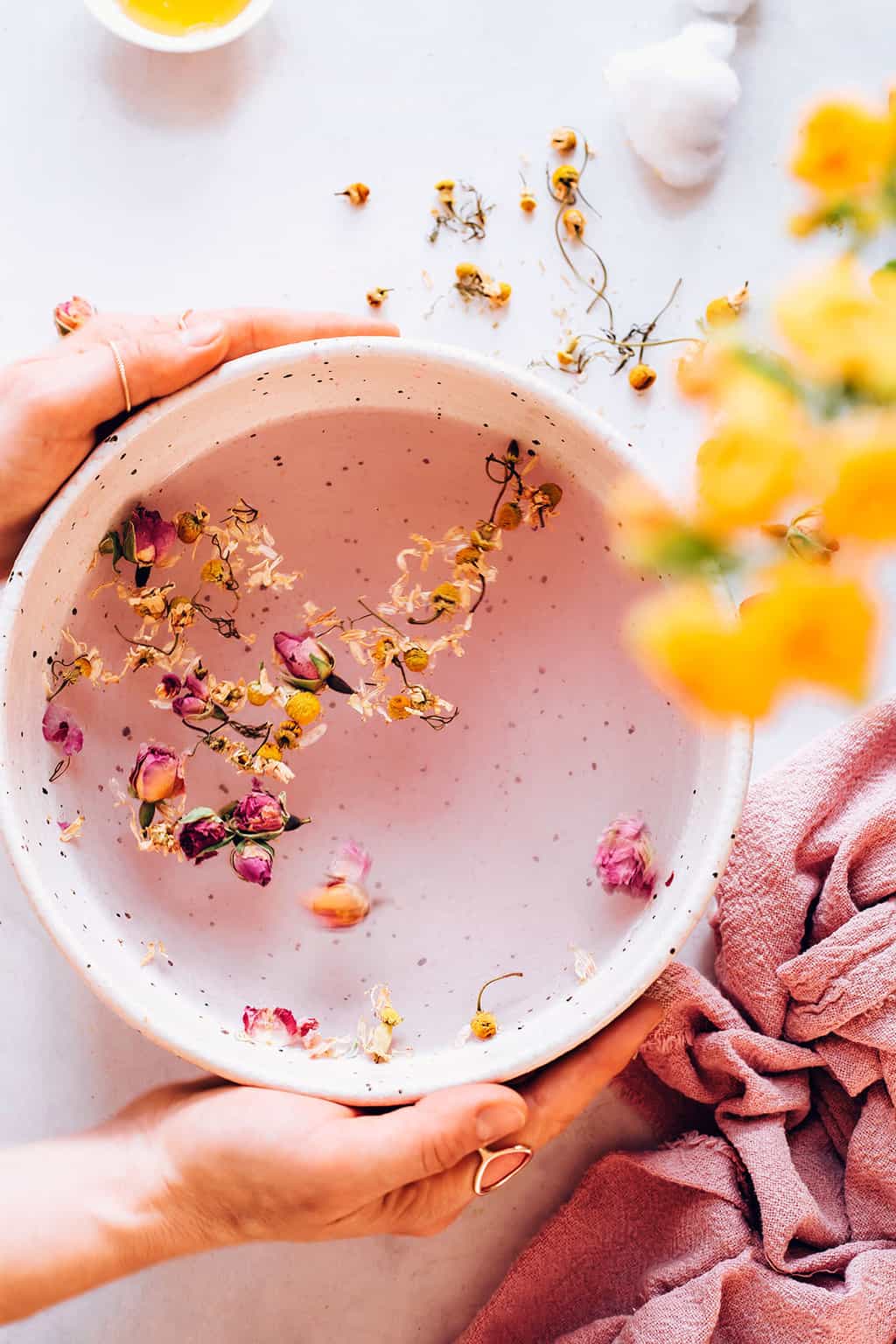
Cleanse skin: Before beginning any facial treatment, it is essential to make sure your skin is clean. A double cleanse is best; ideally one that includes an oil cleanse followed by a gel or foam cleanse or two cleanses with the same facial cleanser.
Prepare the water: Boil about 4-6 cups of water in a pot. Once it’s boiling, remove it from the heat.
Use heat-safe bowl: Transfer to a heat-safe bowl and place on a flat countertop.
Add skin-targeted ingredients: Use the recipes above to select the ingredients for your skin type. Add the fresh or dried herbs directly to the hot water. If you're using essential oils, add a few drops now.
Set a timer: Don't forget to set a timer on your phone before you get under the towel! Enjoy 5–10 minutes of steam, but don't go for longer than 10 minutes as over steaming can have the opposite effect and dehydrate your skin.
Drape with a towel: Immediately drape a towel over your face, shoulders, and the bowl. Close your eyes and take deep, relaxing breaths.
Keep your distance: Keep your face about 10–18 inches from the steam. Placing the steamer too close to your face could burn your skin, warns Fedotova, so keep your face is a comfortable distance from the steam.
Follow with mask or moisturizer: After steaming, follow with a mask, serum, or moisturizer while your skin is still damp.
When Not To Steam
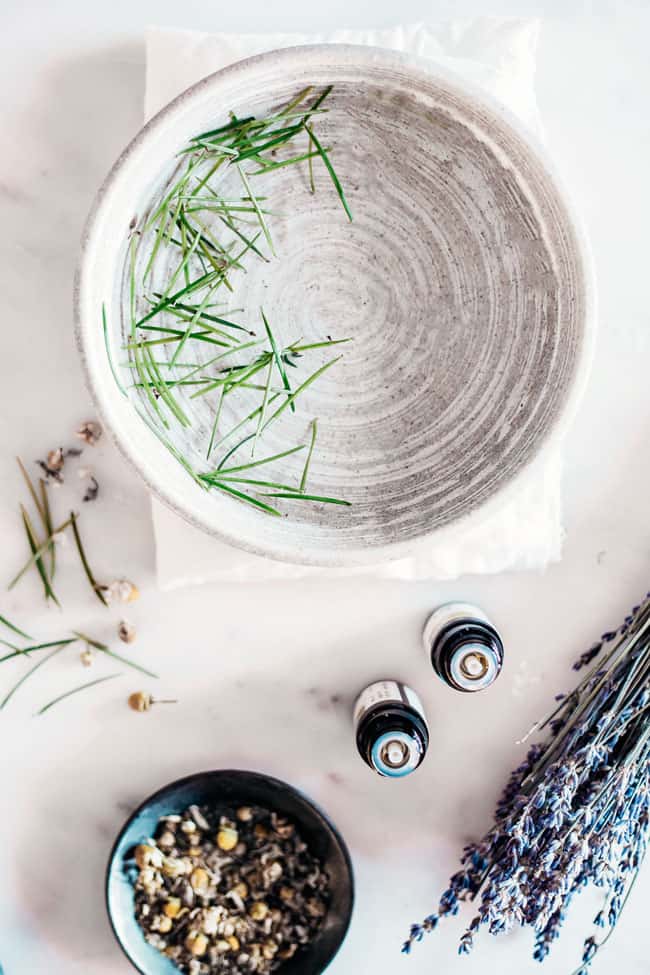
Eczema: Those with sensitive skin, as well as certain skin conditions like eczema, may want to avoid steaming, as the heat can induce an inflammatory response and increase redness and irritation to the skin, according to Urban.
Sunburn: "Anyone with a sunburn, open wounds or lesions to the face, or have circulatory issues are not suitable," she adds.
Rosacea: People with advanced rosacea or very fragile capillaries should not use hot steam, according to Elina Fedotova, celebrity esthetician and owner of Elina Organics Spas.
Lung conditions: "In some rare cases, people with lung conditions may not tolerate the high humidity, so it's best to discuss with your doctor if you fall under this category," she says. For those clients, she suggests cool vapors instead.
Other At-Home Facial Steps to Try
Oxygen facials have been the rage for quite some time, but this at-home oxygen-rich facial is a great option if you don't want to break the bank.
If you are new to at-home facials, scrubs are a perfect place to start. Simple and ideal for all skin types, this Sugar + Honey Face Scrub is the perfect companion to an at-home steam.
FAQ
For most skin types, once a week is sufficient. If you have sensitive skin, you might want to limit it to once every two weeks to prevent irritation.
Ensure the water is not too hot to prevent burns. Always maintain a safe distance from the steam to avoid scalding, and never cover your head entirely without ventilation.
Keep your home steamer in clean condition, sanitizing after every use. If the steamer has not been cleaned and used in a long time, mold can accumulate inside.
After steaming, it’s ideal to rinse your face with cool water to close the pores. You can then apply a moisturizer to hydrate the skin, or follow up with a face mask for deeper treatment.
Even plain water is beneficial for steaming your face. You can also use tea bags like green tea or herbal teas, which are rich in antioxidants.
This post was medically reviewed by Dr. Jennifer Haley, a board-certified dermatologist with extensive experience in medical, cosmetic, and surgical dermatology. Learn more about Hello Glow’s medical reviewers here. As always, this is not personal medical advice, and we recommend that you talk with your doctor.
Photos by Ana Stanciu
282
